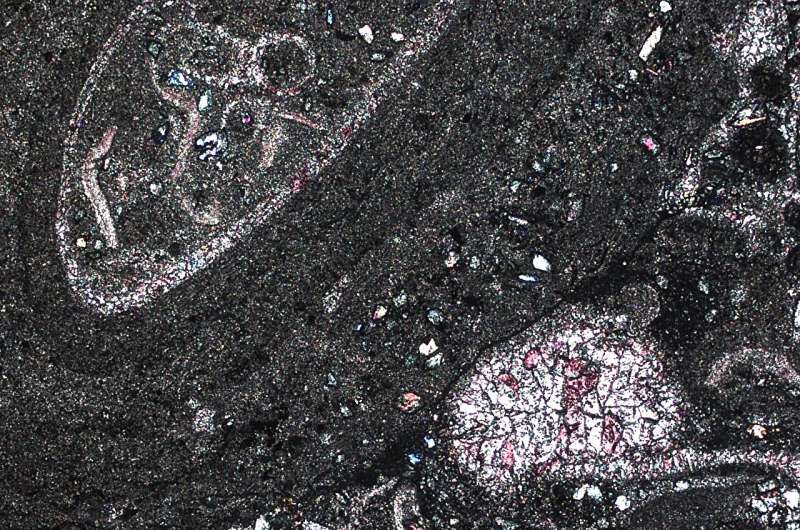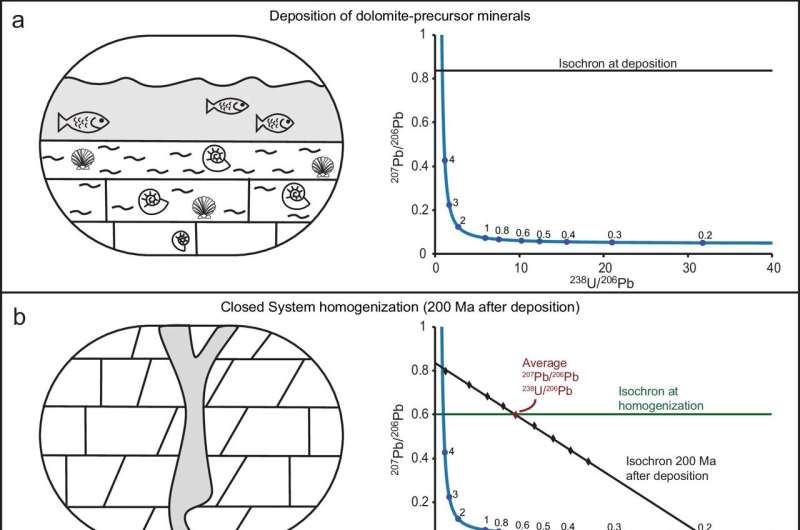This article has been reviewed according to Science X's editorial process and policies. Editors have highlighted the following attributes while ensuring the content's credibility:
fact-checked
peer-reviewed publication
trusted source
proofread
Ancient ocean oxygenation timeline revealed

Dr. Uri Ryb and Dr. Michal Ben-Israel from the Institute of Earth Sciences at the Hebrew University, along with their collaborators, have made an important discovery in Earth sciences. Their study, published in Nature Communications, introduces a new approach to reconstruct the rise of oxygen in ancient marine environments using U and Pb measurements in dolomite rocks spanning the last 1.2 billion years.
Scientists commonly estimate the oxygen levels in ancient oceans from the composition of 'redox-sensitive' elements preserved in ancient sedimentary rocks. However, these compositions can be easily altered in the course of geological history. The team overcame this challenge by developing a new approach that uses dolomite U-Pb dating to detect signals of oxygenation that are resistant to such alteration, giving us an unbiased perspective on marine oxygenation dynamics.
Their record indicates a dramatic increase in the oxygenation of the oceans during the Late Paleozoic era, hundreds of millions of years after the emergence of the first animals. This aligns with other evidence indicating the oxygenation of the ocean at the same time, supports the hypothesis that animals have evolved in oceans that were mostly oxygen-limited, and suggests that changes in ocean oxygen were driven by evolution.

According to Uri Ryb, these discoveries not only enhance our understanding of ancient Earth ecosystems but also have implications for the search for extraterrestrial life. "Revealing the dynamics between evolution and oxygen levels in early Earth environments can put observations on the atmospheric composition of exoplanets that now become available through the new generation of space telescopes in context. Specifically, suggesting that low levels of oxygen are sufficient for complex life-forms to thrive."
More information: Michal Ben-Israel et al, Late Paleozoic oxygenation of marine environments supported by dolomite U-Pb dating, Nature Communications (2024). DOI: 10.1038/s41467-024-46660-7
Journal information: Nature Communications
Provided by Hebrew University of Jerusalem



















